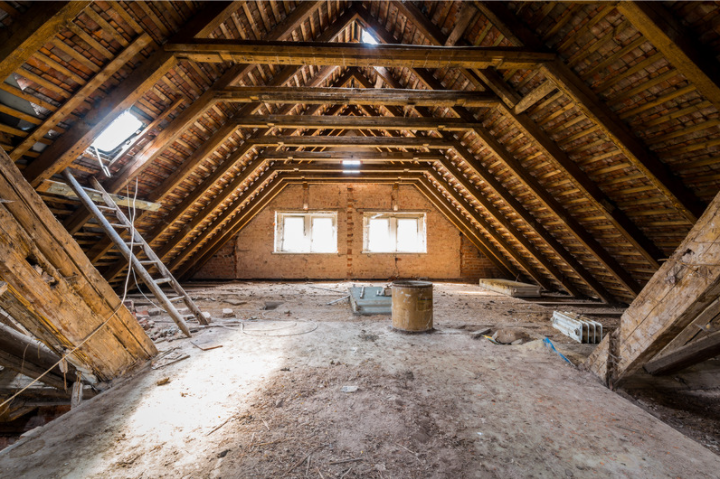When considering home improvements, one area often overlooked is the attic. However, the benefits of attic insulation are numerous and can significantly enhance the comfort and energy efficiency of your home. From reducing energy bills to improving indoor air quality, understanding these benefits is crucial for homeowners and real estate developers alike.

The Role of Attic Insulation
Attic insulation serves as a barrier to heat loss and gain, helping to maintain a comfortable temperature inside your home regardless of the weather outside. By properly insulating your attic, you can ensure your home stays warm in the winter and cool in the summer.
Reducing Energy Costs
One of the most significant benefits of attic insulation is its ability to reduce energy costs. Insulation helps to keep your heating and cooling systems from working overtime, which can lead to significant savings on your utility bills. According to the U.S. Department of Energy, homeowners can save up to 15% on heating and cooling costs by properly insulating their attics.
Enhancing Comfort
Proper attic insulation contributes to a more comfortable living environment. By preventing drafts and maintaining a consistent temperature throughout your home, you can avoid the discomfort of cold spots in the winter and overly warm areas in the summer.
Improving Indoor Air Quality
Attic insulation also plays a role in improving indoor air quality. It helps to keep out pollutants and allergens that can enter your home through gaps and cracks. This is particularly beneficial for those with allergies or respiratory issues.
Types of Attic Insulation
There are several types of attic insulation to choose from, each with its own advantages. The most common types include fiberglass, cellulose, and spray foam.
Fiberglass Insulation
Fiberglass insulation is one of the most popular choices due to its affordability and effectiveness. It is made from tiny glass fibers and is available in batts or rolls.
Cellulose Insulation
Made from recycled paper products, cellulose insulation is an eco-friendly option that provides excellent thermal performance. It is often blown into attics using specialized equipment.
Spray Foam Insulation
Spray foam insulation is a more expensive option but offers superior air sealing properties. It expands upon application, filling gaps and providing a tight seal.
Installing Attic Insulation
Installing attic insulation can be a DIY project, but for the best results, it is often recommended to hire a professional. A professional installer can ensure that the insulation is applied correctly and identify any areas in need of additional insulation.
Professional Installation
Hiring a professional to install your attic insulation can provide peace of mind and guarantee that the job is done right. Professionals have the expertise to handle any challenges that arise during installation.
DIY Installation
If you choose to install attic insulation yourself, be sure to follow all safety precautions and guidelines. Wear protective gear and ensure you have the necessary tools and materials.
Maintaining Attic Insulation
Once installed, it is essential to maintain your attic insulation to ensure it continues to perform effectively. Regular inspections can help identify any issues that may arise, such as moisture buildup or pest infestations.
Regular Inspections
Inspect your attic insulation regularly to ensure it is in good condition. Look for signs of damage or wear, and address any issues promptly to prevent further damage.
Addressing Moisture Issues
Moisture can be a significant problem for attic insulation. Ensure your attic is properly ventilated and address any leaks or water damage immediately.
The Environmental Impact of Attic Insulation
In addition to the personal benefits, attic insulation also has a positive environmental impact. By reducing energy consumption, you can decrease your carbon footprint and contribute to a more sustainable future.
Reducing Energy Usage
By insulating your attic, you can significantly reduce your home’s energy usage. This not only saves you money but also helps to conserve natural resources.
Sustainable Insulation Options
Consider choosing sustainable insulation materials, such as cellulose or recycled fiberglass, to further reduce your environmental impact.

FAQs
What is the best type of attic insulation?
The best type of attic insulation depends on your specific needs and budget. Fiberglass, cellulose, and spray foam are all popular options, each with its own advantages.
How often should attic insulation be replaced?
Attic insulation should be inspected regularly and replaced if it shows signs of damage or wear. Generally, insulation can last 15-20 years, but this can vary depending on factors such as climate and installation quality.
Can I install attic insulation myself?
While it is possible to install attic insulation yourself, hiring a professional is often recommended to ensure the job is done correctly. Professional installers have the expertise and tools to handle any challenges that may arise.
For more information on real-life attic remodels, check out this guide. Additionally, learn about the importance of attic ventilation in this article.
For further reading on passive house design ideas, visit our ideas page. If you’re interested in attic lighting ideas, explore our lighting guide. To avoid common energy-efficient home mistakes, check out our mistakes to avoid section.
This article contains affiliate links. We may earn a commission at no extra cost to you.




